Bonus: RTX 2060 Super vs. Vega 64
For the comparison of the two cards I have chosen some games that I either play frequently myself or that are generally quite popular. Of course you can influence such tests significantly with the selection of games, because Gameworks or other preferences can have a huge influence on the final result. If I only test Unreal-Engine games, the Geforce will come out as the winner by a huge margin – if I only choose Frostbite titles, the Vega will end up in front.
I mention this because the two cards are very close to each other in terms of performance, and I don’t want to make either card look particularly good by choosing the games. Some will now cry out and complain that the Vega used is equipped with a water block and undervolted, while the air-cooled Geforce runs with its default settings. The temperatures – which, by the way, are impressively low with the KFA2 card used, despite moderate volume – I will of course not compare.
If you are interested in the exact data, I can recommend Igor’s review of the KFA2 2060 Super EX, which corresponds 1:1 with my personal observations. That still leaves the Undervolting in the room. I use here the “sweet spot” for Vega, which is at about 1500MHz GPU clock with a voltage of a little below 1000mV and 1000MHz memory clock. These are values that are almost certainly achievable by all Vegas from the reference card to the thickest custom model.
I also believe that the majority of the users of this community are able to make the appropriate settings on their devices themselves with just a few clicks. The performance advantage of the Vega through the undervolting is roughly the same as the moderate factory OC of the 2060 Super EX compared to the reference model and only serves the purpose of getting the Vega out of the “booze” a bit. The Vega is in dire need of the latter because, as my measurements showed, the 2060 Super is still miles ahead of even the underpowered Vega in terms of efficiency with virtually identical performance. But now let’s talk numbers.
Test system:
|
CPU: |
AMD Ryzen 7 1700X @ 4.0GHz @ 1.3V |
|
Cooler: |
EK Supreme Acetal Mod |
|
MoBo: |
ASUS Prime X470 Pro (AGESA 5406) |
|
RAM: |
16GB DDR4 3400 CL14 G.Skill Trident Z RGB |
|
SSD: |
Samsung 970 Evo 512GB + Sandisk SSD Plus 1TB |
|
GPU 1: |
Sapphire Vega 64 Nitro+ UV @ Bykski Block |
|
GPU 2: |
KFA2 Geforce RTX 2060 Super EX 1-Click OC |
|
Case: |
Corsair Carbide Air 540 Mod |
|
Loop: |
Alphacool 360mm Radiator + Watercool MoRa 2 1080 + Enermax Neochanger |
|
PSU: |
Seasonic Focus+ Gold 850W |
|
OS, driver: |
Windows 10 2004, Nvidia 456.38, AMD 20.8.3 |
1440p Benchmarks
13 Game Average
Powerdraw
Conclusion
My personal conclusion of this test I will split into two parts, because I have to say a few words about the RTX 2060 Super from KFA2 separately besides the “RTX on” story.
Turing Features
With the features there is definitely nothing to complain about. Playing around with RTX Voice and Broadcast (which I couldn’t test due to lack of a webcam) is “nice to have” and can be used quite reasonably. Especially the NvEnc Video Encoder is a low-cost alternative to a streaming PC for hobby streamers and can even significantly reduce the computing time for professional “content creation” when editing and rendering videos, if the software supports GPU accelerated rendering.
Raytracing is still in its infancy for me and if I look at the “RTX on Benchmarks” of the Turing and also Ampere graphics cards, this will probably not change that soon. The technology allows for fantastic graphical effects and can provide unprecedented immersion, but requires a lot of processing power and reduces frame rates accordingly. This is definitely a very interesting story for technology freaks, but it only makes sense to use it with the most powerful graphics cards of the caliber of a 2080 Ti or even faster, which are not affordable for everyone.
Personally, I don’t think it’s fully operational for the masses yet and whether the more subtle effects are worth the significant performance slump, that’s something everyone has to decide for themselves at the end of the day.
The real gamechanger is – and I wouldn’t have thought so after the absolutely desolate and embarrassing first implementation: DLSS. If Nvidia can optimize this even further, then it might even be possible to achieve something with RTX On in the near future without any significant FPS loss.
KFA2 RTX 2060 Super EX 1-Click OC
Finally I’d like to say a few words about the “supersized” small Turing card, which surprised me very positively. 1440p performance is solid throughout and in games with DLSS support even 2160p with maximum details can be played fluidly – or even with high frame rates in 1440p. The temperatures and the volume are pleasantly low on the KFA2 model, which is nothing to complain about considering the price (relative to the competitors).
With performance above the level of the GTX 1080, plus the new features, you don’t really have the feeling of holding a product of the “beginner class” in your hands. Of course the new GPUs are a bit faster again and have lowered the prices on the used market (finally!), but that’s why the Turing cards might be interesting now, because the features are really great and just because there are faster cards on the market now, the 2000 series cards don’t automatically become “bad”.














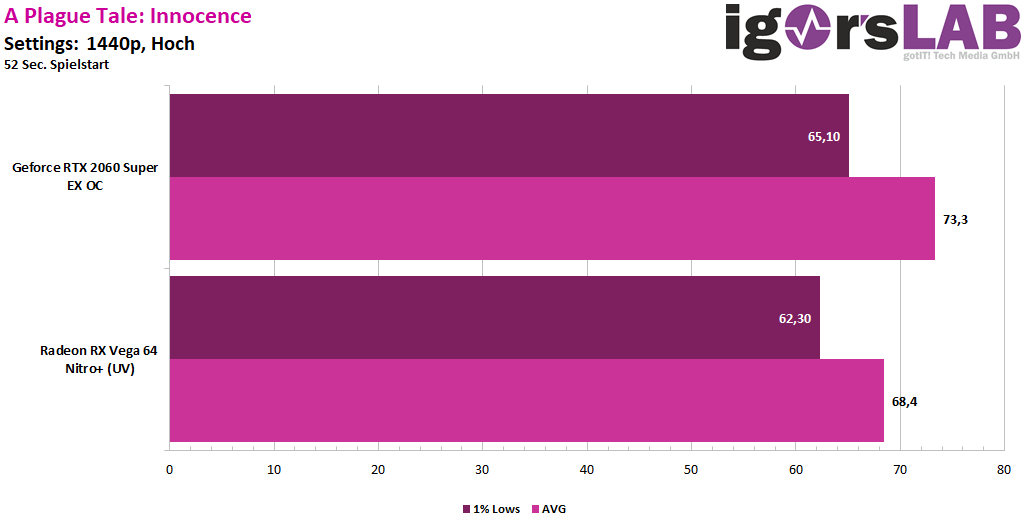
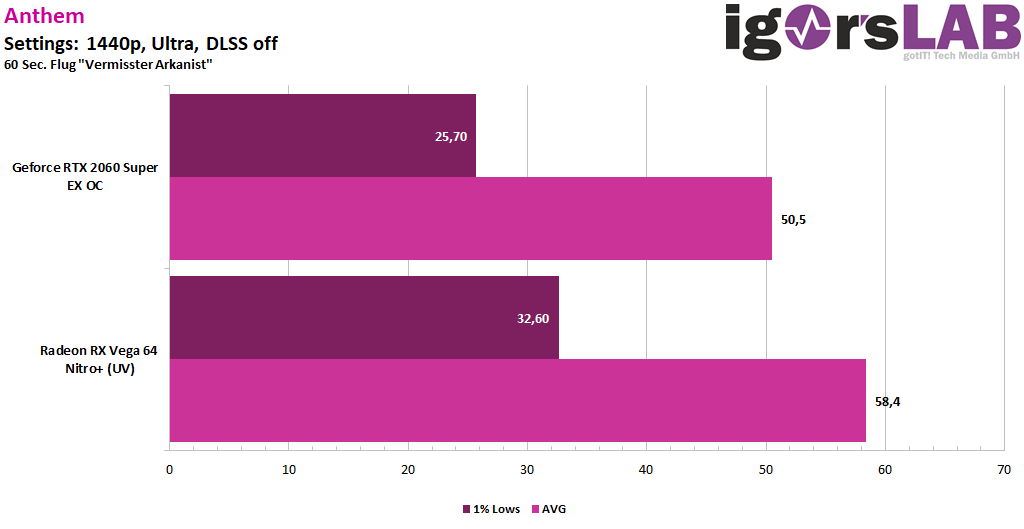
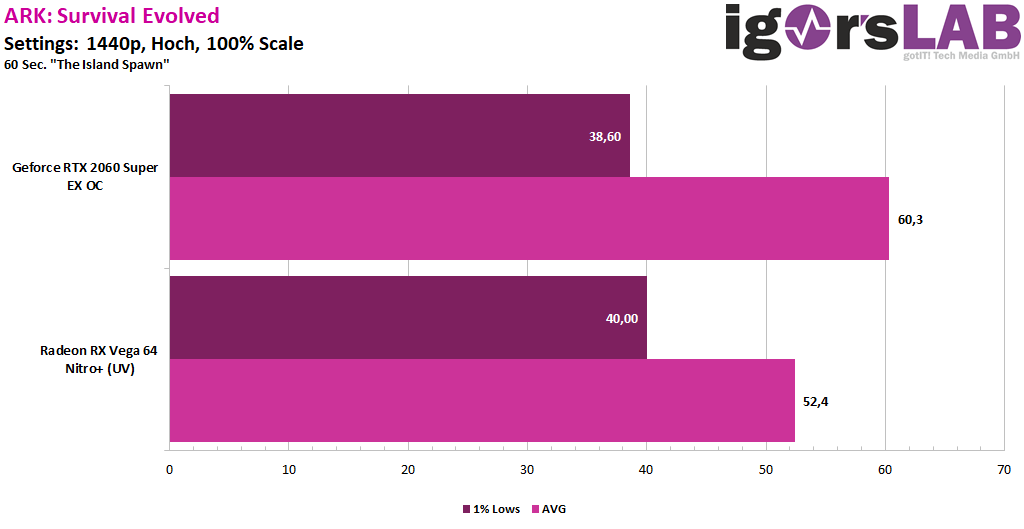

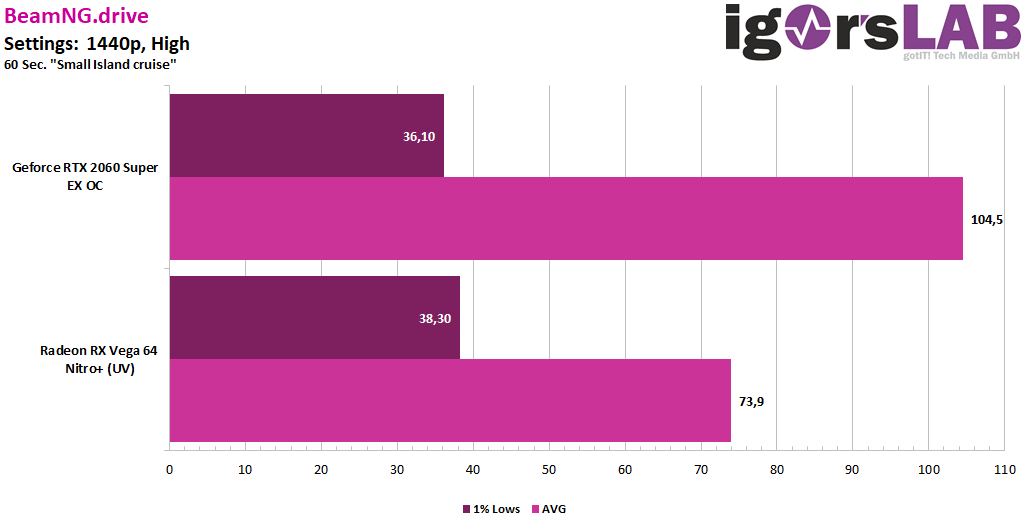
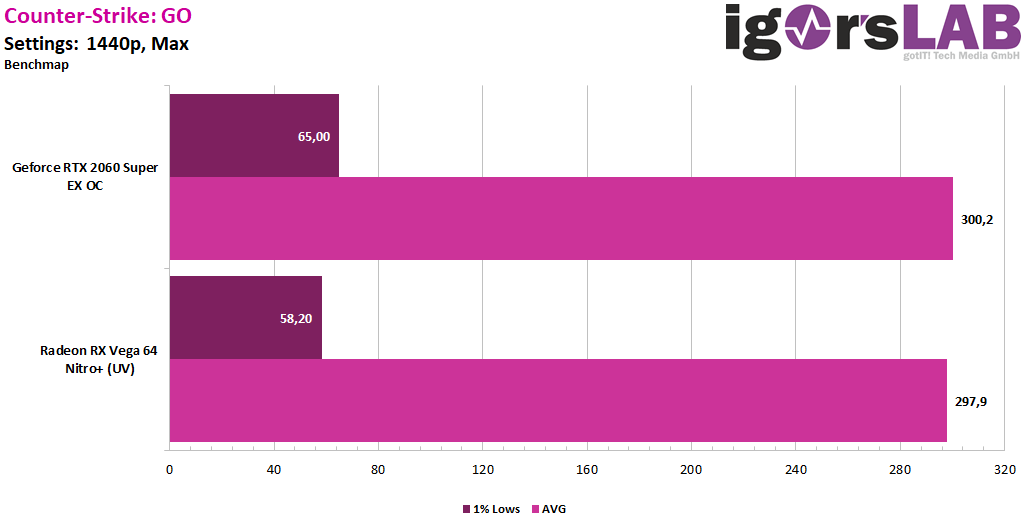
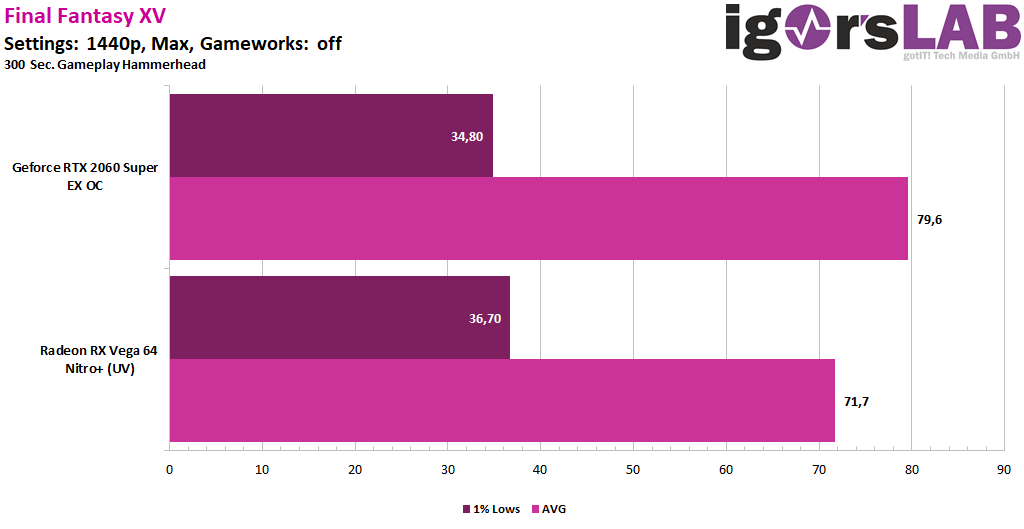
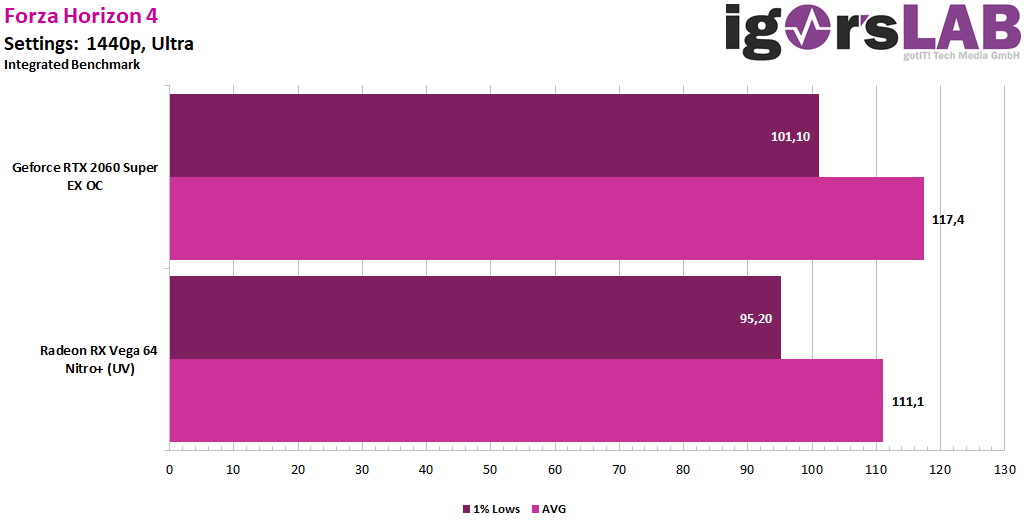
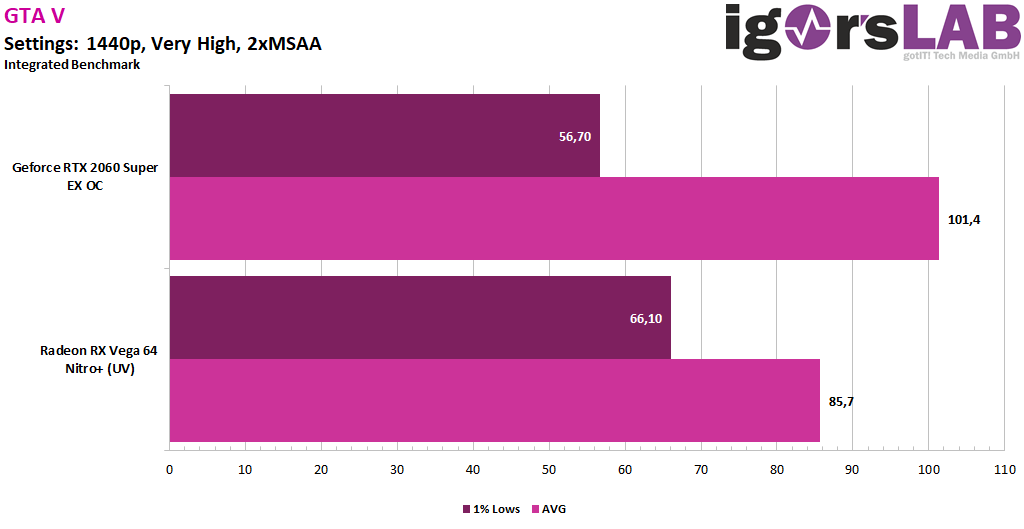
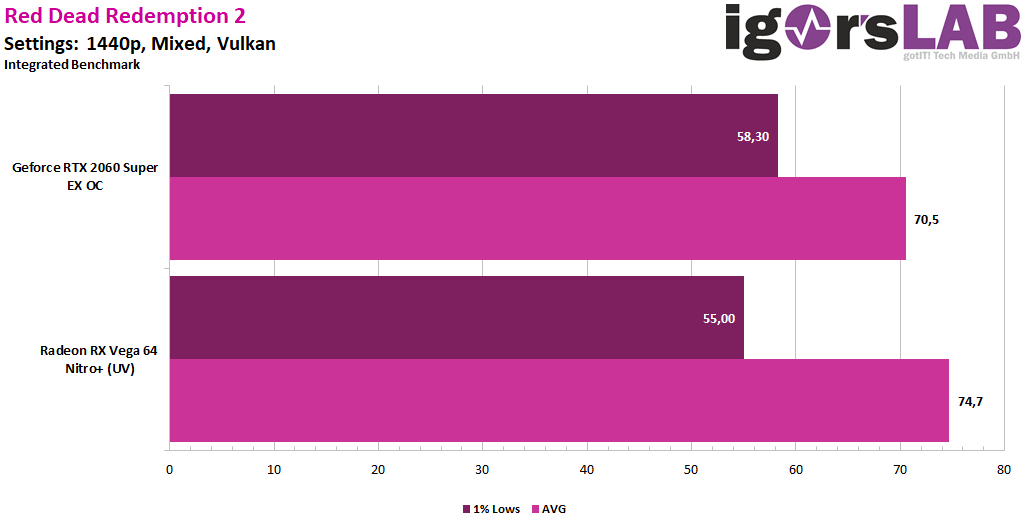
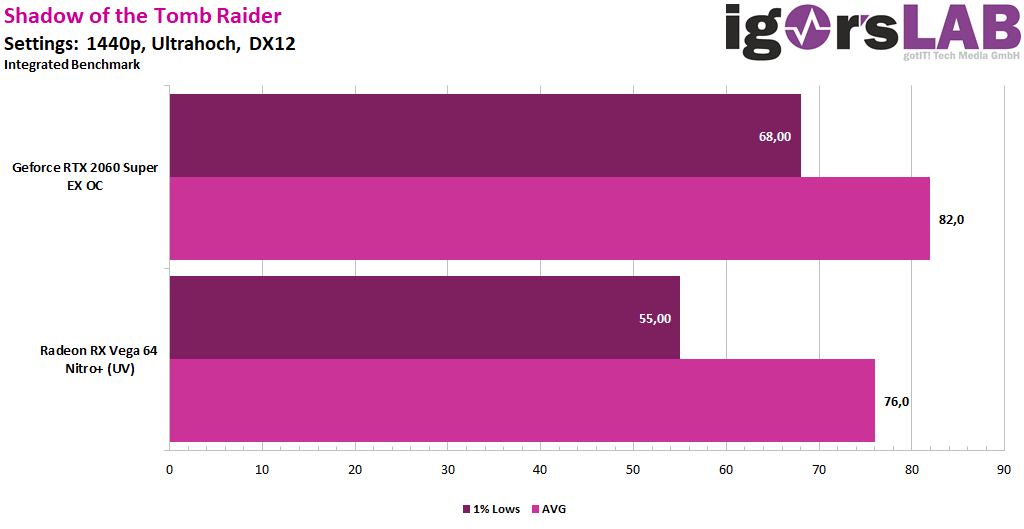
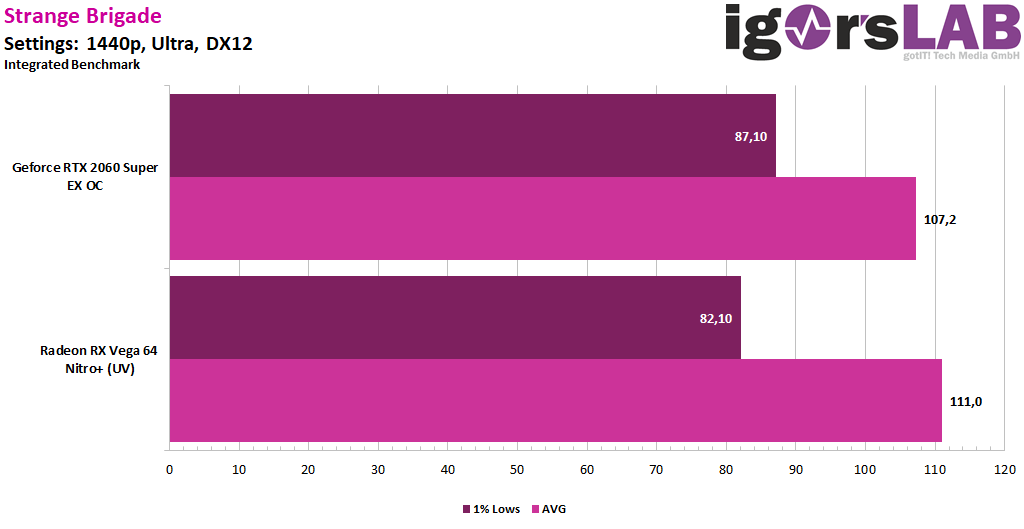
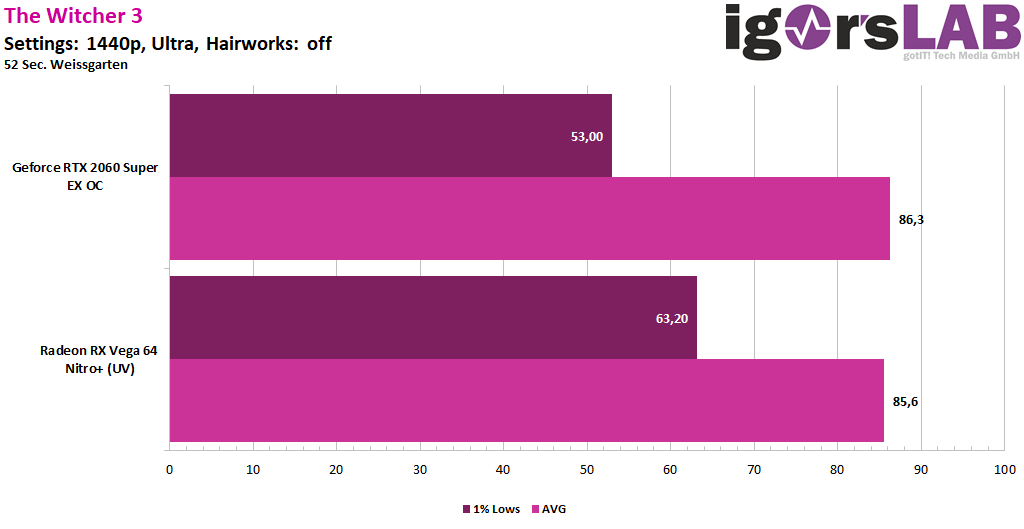

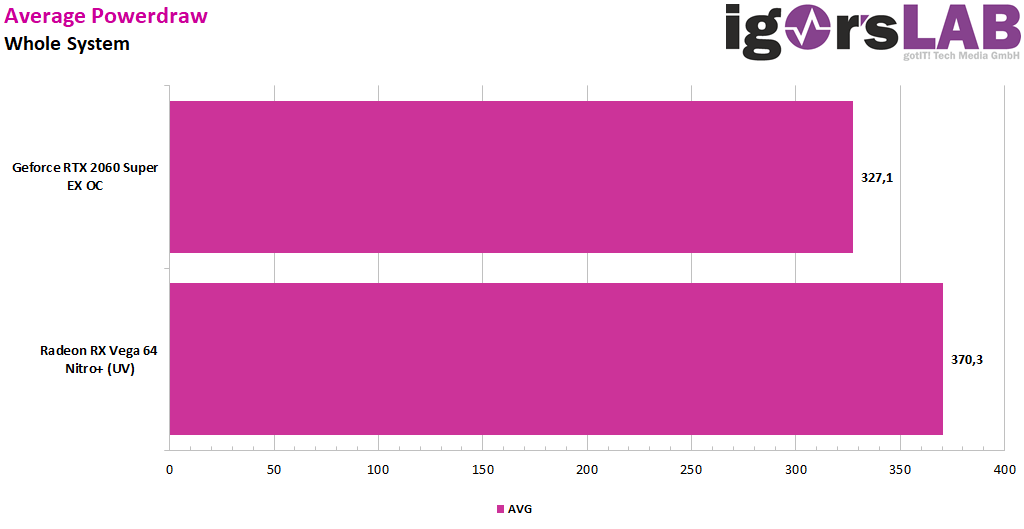

















Kommentieren